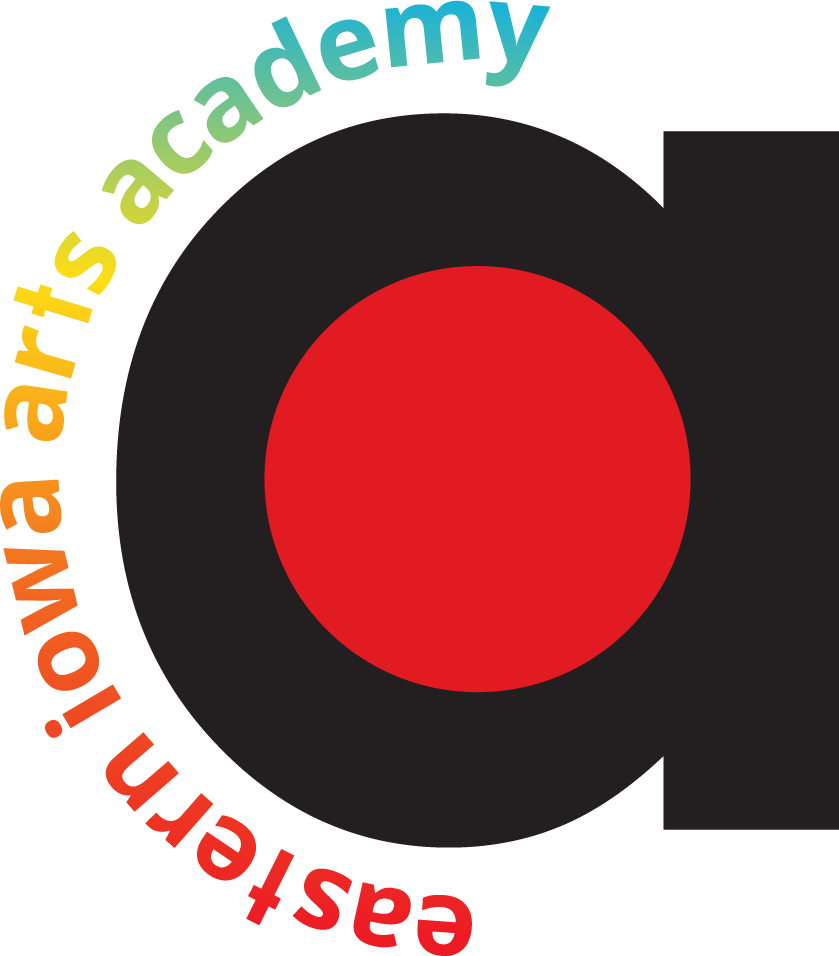Local Artist Stacy Haynes-Moore
Stacy teaches language arts, writing, and education courses in Cedar Rapids and Iowa City.
Class 1 of 4
Hello poets! Who are you? What does your NAME mean to you? This week, let’s play with words and write about our names. There are suggestions in the three sections below to get ideas moving for a “My Name” poem.
Poet’s Brainstorms
To begin a My Name poem, I like to brainstorm. As poets, we are keen observers. Brainstorming before we write can help capture details and insights. Choose 2-3 ideas from the list below to help you unearth the way you feel or think about your name or to discover information about your name.
- Make 3 statements beginning “To me, my name means…”
- Make a list of your main family members. Under each person’s name, brainstorm what you think the family member might say about what your name means.
- Have a conversation with a family member and ask questions. If it’s a parent, ask: How did I get my name? If it’s an aunt or cousin, you might ask: Did you know what I would be named – or was it a surprise? If it is a grandparent, ask: Does my name remind you of someone you know or someone from our family?
- Interview a friend. You might ask: What are 5 words that you think describe me?
- Write your name in big letters on a blank page. What do you think about as you look at your name and these letters? Draw, sketch, list ideas, or write down everything that comes into your mind about your name.
- Make 3 statements: “I like my name because…”, “My name is like…”, and “When others hear my name they…”
- What facts or details can you discover about your name? Explore Meaning of Names or Family Name History.
One of my first steps writing a poem is to brainstorm. Brainstorming is part of my process to help me reflect and capture details. One of the steps that I used for the My Name poem was to interview my brother and my mom-- and I learned something new in these conversations! My mom’s story about my name originating from a childhood book eventually lead me to the beginning lines of my poem.
Poet’s Notebook
Create a poet’s notebook. Any kind of notebook will do. This is your own space to keep brainstorms, observations, and ideas. It can be your space for playing with words, arranging lines on the page, and trying different poetry forms. In this week’s notebook, try out an acrostic or freeform for the My Name poem.
An acrostic uses the letters of your name. You can use your first, middle, or last name – or all! This is up to you. Each letter begins a new line for the My Name poem. In my sample poem, I decided to use the acrostic form and each line begins with a letter of my first name, S-T-A-C-Y.
A freeform may not have any specific form or pattern. It can be an unstructured flow of feelings, thoughts, and ideas for the poet’s expression. You will hear and see this form in action in the Poet’s Playground.
Poets’ playground
Here are three writers’ My Name poems. Emily, a high school student who does a poetry slam; Emmett’s– a poem he authored as a middle school student that accounts for family history; and Sandra, who is not a student, but a famous writer. Listen to this “My Name” writing (it’s the first 1 minute and 10 seconds-after the ad).
Poets, I’m excited to hear what you imagine. Share your work back with us.
Sincerely,
STACY (and here’s my acrostic for you…)
S – Stacy is the name my mom says that she got from reading a story, a story she remembered from her own growing up, that name she remember was actually…
T – Tacy, not Stacy. She meant to name me Tacy. Do I look like a Tacy? Sound like a Tacy? I wonder… Who would I be now if I’d been gifted that story character’s name and not been ‘Stacy’?
A – Almost always growing up, my brother Brian said I was annoying, but we’d still laugh, watch cartoons, play outside together until we got wrangled in for the night; almost always growing up, my grandmother said I was her favorite granddaughter (I tried not to point to the obvious, I WAS the only granddaughter) she still loved me for me; almost always growing up, I found friends and made enemies, and as a ‘STACY’ I know it is sometimes hard to let go of the past. I also know that I am…
C – Creative. Considerate, concerned, communicating. A capable dancer, a terrible cook, a confident card player, a compassionate friend, a caring Dog mom – and a real-life character who discovered that I was misnamed from a children’s storybook…
Y – Yet I turned out, to be who I am, to be who I want. I write my own story.
You can find additional creative writing classes here:
Share your work and stay connected!
We are curious to see your project! Upload photos in the comment section below. If you have trouble, or want to share a short video, email us at info@eiaaprogram.org. Leave your school name in the comment box and we will share images with your school!
We want to stay connected to our creative students when we get back to the new normal. While you are here, learn more about the Eastern Iowa Arts Academy. While we don't have much taking place in real space/time during the pandemic, we will get back to our regular live and in-person classes. When we do, we'd love to have you as a member!
